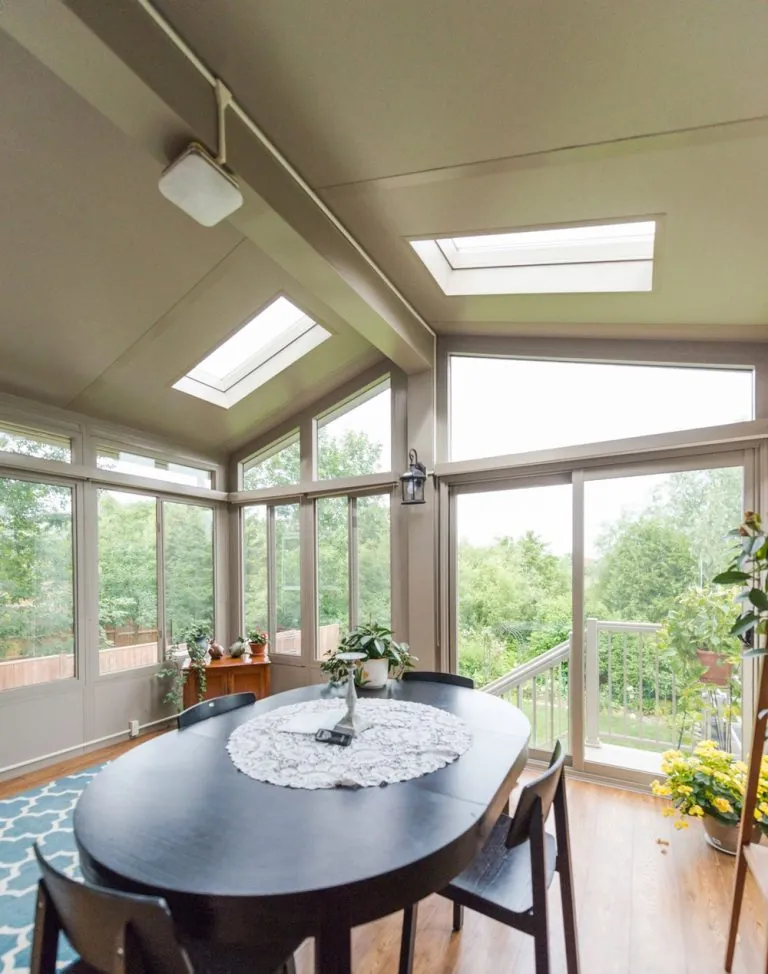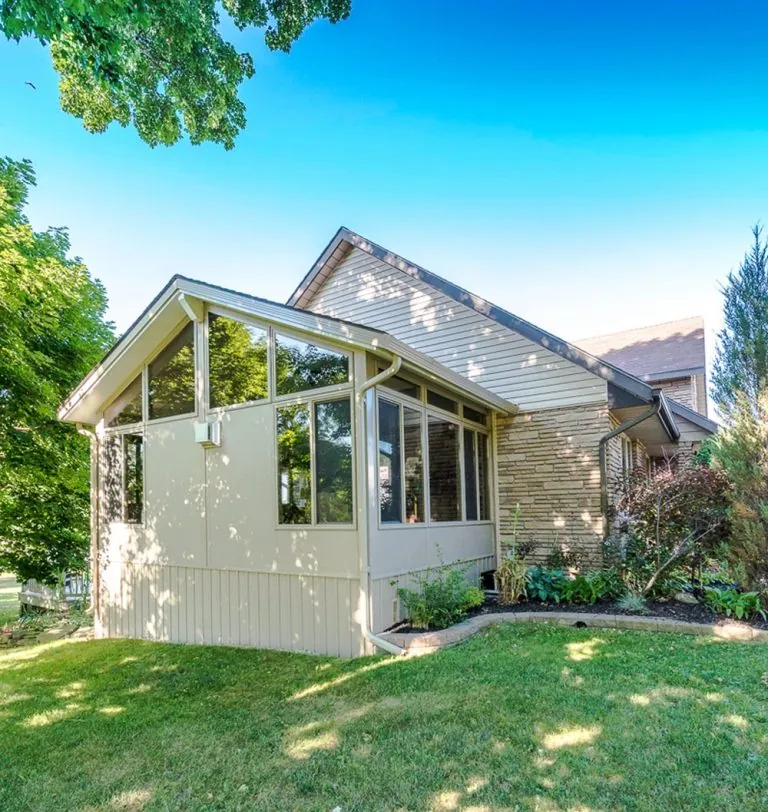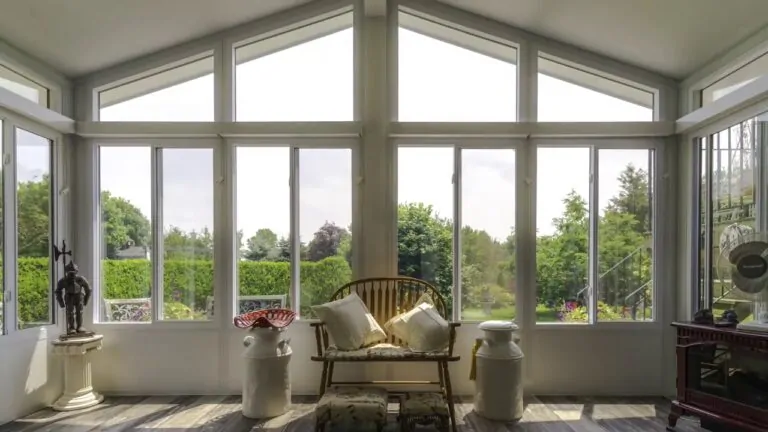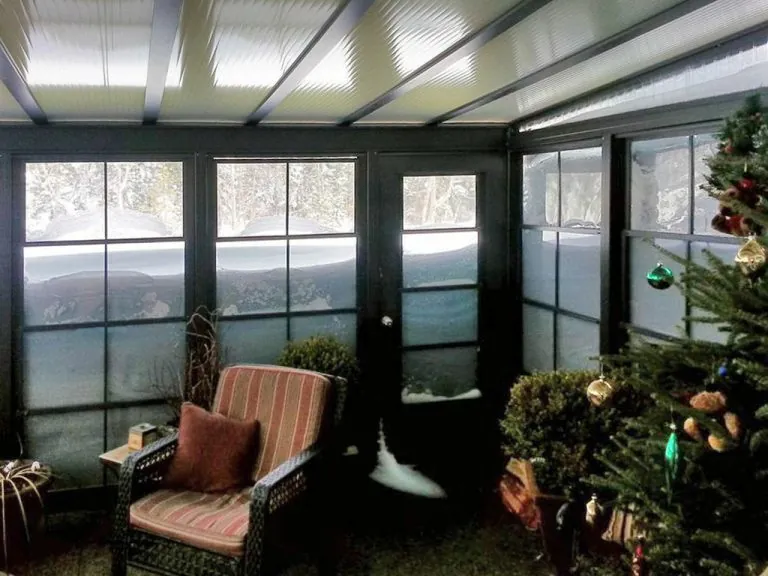Thinking about adding a sunroom to your home in Portland? You’re probably wondering how much it will cost, what affects the price, and what actually works in Maine’s long, cold winters. This guide gives you clear, honest price ranges and explains what makes a sunroom more or less expensive. You’ll also learn how snow loads, permits, and insulation affect your budget in 2026 so you can plan with confidence.
If you’d like a quick, no-pressure review of your ideas, Sunspace by Sunrise Sunrooms can review your plan and structure for a custom sunroom in Portland, helping you understand what will work best in the local climate.
What Drives the Cost of a Sunroom in Maine
Several things affect the total price of a sunroom. Here are the biggest factors:
- Type of Sunroom
-
-
- A three-season room is usually the least expensive. It blocks wind, rain, and bugs but doesn’t have full insulation or year-round heat.
- A four-season room costs more because it includes insulation, energy-efficient glass, and a heating and cooling system so you can use the room even in January.
-
- Size of the Room
A larger sunroom needs more materials, more labor, and stronger framing to handle Maine’s snow loads. Every extra foot adds to the budget.
- Foundation & Structure
-
- Depending on your home and site, you may need:
- Concrete piers
- A concrete slab
- Structural upgrades for snow load
Foundation work in Maine usually adds $1,000 to $6,000 to the project.
- Windows & Doors
Upgrading to double-pane or triple-pane insulated glass increases comfort in winter, but it also adds cost. Better glass reduces heat loss and helps with energy efficiency.
- Heating & Cooling
Adding a ductless mini-split or extending your ductwork typically ranges from a few hundred to several thousand dollars, depending on the size of the room.
- Labor
Labor is a big part of building a sunroom—usually 40% to 60% of the total cost. Cold-climate work takes more care, more sealing, and more inspections, which raises labor needs but improves durability.
- Maine Energy Code Updates
Maine adopted the 2021 IECC energy code, which requires better insulation and tighter construction. This increases some material costs but also improves comfort and long-term efficiency.
Do Permits and Timing Affect the Budget?
Yes. Portland requires a building permit for any addition, including sunrooms. If your project includes electricity or heating, separate electrical and mechanical permits are usually required. Permit fees are typically in the hundreds, and good drawings help speed up approval.
Prefab rooms are often installed in 1–2 weeks once materials arrive. Custom-built rooms usually take several weeks, especially when you factor in design time, permits, and inspections. Working with a team that handles permits for you helps avoid delays and keeps your schedule on track.
Real Maine-Style Price Examples by Size
Here are typical price ranges Maine homeowners see for mid-size rooms once foundation, windows, and mechanicals are included:
12×12 Room
- Three-season: $11,500–$33,000
- Four-season: $28,500–$47,500
14×14 Room
- Three-season: $15,500–$45,000
- Four-season: $39,000–$65,000
20×20 Room
- Three-season: $32,000–$90,000
- Four-season: $80,000–$124,000
These ranges fit what many Portland homeowners pay once insulation, snow-load requirements, and glazing choices are factored in.
Quick Comparison Table
| Sunroom Type | Maine-Ready Features | Typical Price Range |
| 3-season | Enclosed glass, limited insulation, no full-time heat | $8,000–$50,000 |
| 4-season | Insulated structure, high-performance windows, HVAC | $20,000–$80,000 |
| Solarium | Lots of glass, stronger structure for large spans | $30,000–$150,000 |
How to Save Money Without Regretting It Later
There are smart ways to reduce cost while still getting a comfortable room that works in Maine.
- Keep the size smaller
Larger rooms cost more and may require stronger framing for snow loads.
- Choose a three-season room if winter use isn’t important
This saves money on insulation, windows, and HVAC.
- Spend wisely on insulation and windows
Good glass and insulation improve comfort and lower energy bills for years.
- Convert a porch or deck—if it can meet code
Some decks can be reinforced, but many need upgrades to handle snow and structural loads.
Prefab vs. Custom Sunrooms in Maine
Both can work well—your choice depends on your goals.
Prefab Sunrooms:
- Usually lower cost
- Faster installation
- Good for three-season rooms
- Typical price: $10,000–$50,000
Custom-Built Sunrooms:
- Better for four-season Maine use
- Stronger snow-load engineering
- More control over insulation and heat
- More design flexibility
Working with a skilled, experienced crew helps protect warranties, pass inspections, and prevent costly mistakes.
FAQs
Is a sunroom worth it in Maine winters?
Yes—if it’s a four-season room with insulation, good windows, and a reliable heat source. A three-season room still works well most of the year if you don’t need winter use.
Do I need a permit in Portland for a sunroom?
Yes. Portland requires a building permit for sunrooms, and you may also need electrical or mechanical permits. Good drawings and coordination help avoid delays.
Can a three-season room be heated later?
It can, but upgrades will be needed—better windows, added insulation, and a heating system. It often costs more to convert later than to plan for four-season use from the start.
How long does a sunroom take to build?
Prefab rooms take about 1–2 weeks after materials arrive.
Custom rooms usually take several weeks, including design, permits, inspections, and weather delays.
What’s the best way to compare quotes?
Ask contractors to itemize foundation, framing, windows, insulation, HVAC, electrical work, and permit fees. Also, ask about snow-load engineering and whether the design meets Maine’s energy code.
A Helpful Next Step
If you’d like a clear, local estimate based on Maine’s 2026 pricing, Portland permit rules, and real snow-load requirements, schedule a short consultation with Sunspace by Sunrise Sunrooms. One friendly conversation with a Maine specialist can save weeks of guessing and help you build a sunroom that feels great in February and July.






